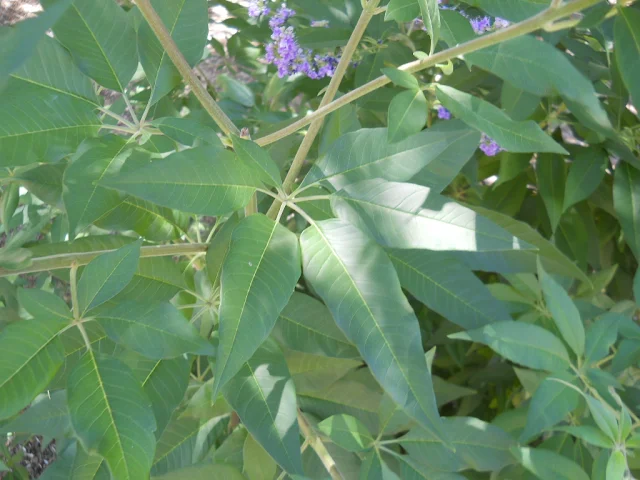This is actually on the property of my neighbors but we have one growing in our front yard, as well.
Two, actually.
On the recommendation of another neighbor who said it was a Mexicana plant, we pruned ours to within a propinquity (heh-heh) of death this spring.
But it has sprung back.
(Again, this is not it but one close by)
(As is this.)
That plant quite obviously has not been pruned back to the ground.
Consequently it is much larger than ours.
(At last. This one is ours.)
When the Google images showed a Mexicana plant to have bright yellow flowers, I searched further.
I noted the leaves with their near-Marijuana leaf shape and wondered hmmmmmmm . . .
And the flowers, as you can see, are bright purple.
And then the great gods of Google revealed the truth.
This plant is a Texas Purple Sage!
So what is it doing in Arizona?
It turns out that this is its natural habitat and that it thrives during the monsoon.
Which is now, even though we have had very little rain this season.
So we have TWO kinds of sage.
You remember the Rocketman Russian Sage, which is blooming its fool head off in the back yard.
Incidentally, all that purple foliage turns out to be a natural draw for what appear to be hundreds, if not thousands, of bees.
They move quickly but I got this fuzzy picture of one of them gorging himself.
The first time I saw the bee swarm I was nervous and backed away.
But later, armed with my trusty camera, I found that the bees are so interested in the flower pollen they have no time or inclination to attack a human.
Another fact is that the bees often share the plant with finches of more than one variety.
The goldfinches seem particularly fascinated.
So there you are, Gentle Readers.
I hope you enjoyed your horticulture lesson for the day, (I concluded, sagely.)
Heh-heh.








Nice long post. Time for a Vodka now.
ReplyDeleteSteve
Good thing I read these posts and now stand corrected! And yet ANOTHER sage? Yours look much improved by their drastic haircut last spring. Some of these are beyond the gutter line having grown into trees. Some people also misname these plants as butterfly bushes. They are pretty when they flower and are kept under control.
ReplyDeleteMost elucidating, professor.
ReplyDeleteMike
Very Zane Grey.
ReplyDeletehttps://en.wikipedia.org/wiki/Riders_of_the_Purple_Sage
We get loads of docile bees, and finches, as well.
We have a couple of sage over here on the central coast that must be related. Mexican Sage and Russian Sage. Not sure how the Russian Sage got here and there is some debate as to whether it might be miss named.
ReplyDeleteIt is a hearty family though.
Yeah, I thought that purple one looked familiar. Very interesting, thanks. :)
ReplyDeleteThis was a very sagacious post. A Texas Purple Sagacious post.
ReplyDeleteYou're broadening my knowledge of vegetation. With all those bees there might be some honey hidden nearby.
ReplyDelete